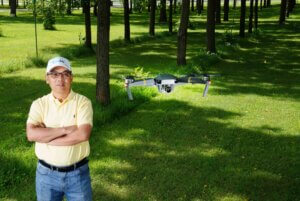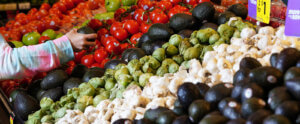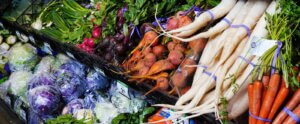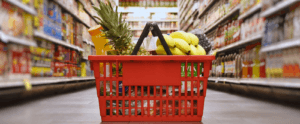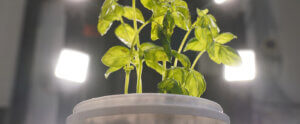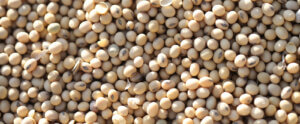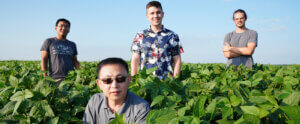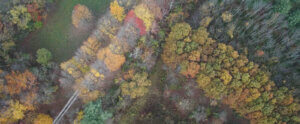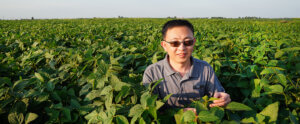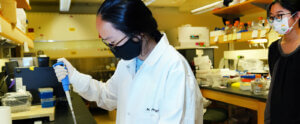Site Archive
Report shows differences in food insecurity, sustainable food purchasing between racial and ethnic groups
Black and Hispanic consumers are somewhat more likely to check food labels and much more likely to face food insecurity, according to the Consumer Food Insights Report.
READ MOREThrough integration of aerial and ground-based mobile mapping sensors and systems, a team of Purdue digital forestry researchers has used advanced technology to locate, count and measure over a thousand trees in a matter of hours.
READ MOREPolicy opinions revealed in Consumer Food Insights Report
As the U.S. House Committee on Agriculture reviews the Farm Bill, consumers shared their opinions on food and agriculture policy in a new survey. The third Consumer Food Insights Report from Purdue University offers insights into the popularity of specific policies and how opinions differ depending on a consumer’s income.
READ MOREConsumers are managing inflation in food prices for now, but their expectations to experience future inflation increased from last month, according to this month’s Consumer Food Insights Report from Purdue University.
READ MOREPurdue trustees approve $20 million greenhouse expansion
Today, the Purdue University Board of Trustees approved a $20 million allocation toward a phenotyping greenhouse facility. A component of Plant Sciences 2.0, one of the five strategic initiatives of Purdue’s Next Moves, the facility will expand opportunities for non-invasive sensor-based phenotyping and add nearly 5,000 square feet of greenhouse research space.
READ MOREFirst-of-its-kind estimate of the total number of tree species
One person can’t measure all the trees in the world, but when many people come together, a global view becomes possible. A worldwide collaboration of scientists has produced the first ground-sourced data estimate of the total number of tree species on Earth and found that more than 9,000 species have yet to be discovered.
READ MOREContaminated leafy greens turn purple
Some might say you look a little green when you are sick. Leafy greens actually turn purple—although that’s not obvious to the human eye, it can be seen through advanced hyperspectral imaging. Purdue researchers discovered this color change (different than purple varieties of some vegetables) in kale and basil stressed by cadmium, a heavy metal toxic to human and animal health.
READ MOREAlthough most of the world’s soybean crop is fed to animals, a Purdue plant breeder thinks that soybean’s complete protein — it contains all eight amino acids essential for human health — makes it the logical choice for the plant-based meat increasingly making its way onto consumers’ tables.
READ MOREMultiscale imaging illuminates the big picture of plant protection
After decades in pursuit of plant cellular signaling, a researcher returns to questions raised by his early work — now equipped with advanced technology and the establishment of a $12.5 million institute.
In 1998, a Purdue University study challenged conventional thoughts about what triggered a plant’s response to infection and helped open the door to a new era of chemical signaling research. Now a scientist involved in that collaborative study hopes to answer the very questions his early research raised through a new National Science Foundation–Biological Integration Institute program.
READ MOREImproving soybeans reduces the cost to farmers and the environment
Instead of relying solely on nitrogen in the soil, soybeans and many other legumes can pull nitrogen from the air for their growth – a natural process that is environmentally friendly and also increases soil nitrogen levels for the next crop in rotation.
Plant science research at Purdue University has found a potential way to double soybean plants’ use of the process, called biological nitrogen fixation.
Powerful partnerships among Purdue University’s colleges of agriculture, engineering and science will advance digital forestry tools to save time, money and achieve a deeper understanding of an important natural resource.
READ MOREAgronomy professor honored by Crop Science Society of America
The Crop Science Society of America (CSSA) has announced that Purdue professor Jianxin Ma is its 2021 Fellow Award Recipient. The annual award recognizes outstanding contributions to crop science through education, national and international service and research.
READ MORERecent Posts
- Report shows differences in food insecurity, sustainable food purchasing between racial and ethnic groups
- Integration leads to leap in tech for forest inventory, management
- Friday Photo: 05/13/2022
- Urban-rural food satisfaction, food security gaps show in new report
- Unsung Diversity Hero Awards honor those who’ve gone above and beyond

